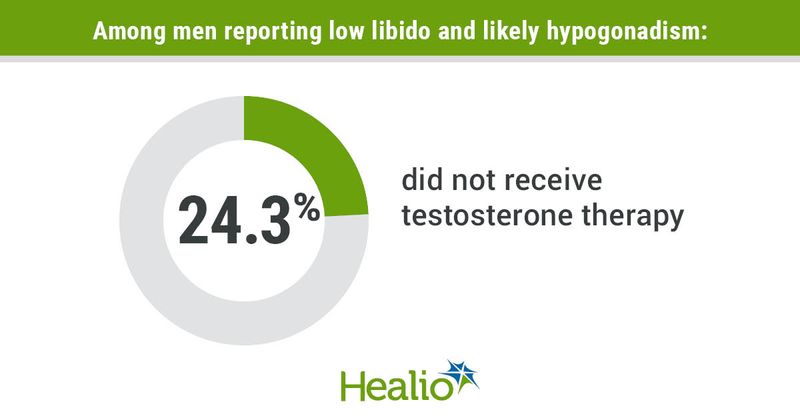‘Lack of consensus evidence’ may drive variability in testosterone prescribing
Nearly one-quarter of men reporting low libido and a total testosterone measurement indicating likely hypogonadism did not receive a prescription for testosterone replacement therapy, according to a U.K. database analysis.
In a study analyzing electronic health records for more than 2.5 million general practitioner-registered patients, researchers found men who did receive a testosterone prescription tended to be older and have a higher BMI and greater risk for comorbidities such as type 2 diabetes.

“We were surprised at how much variation there was in primary health care prescribing within the study population located in London,” Channa Jayasena MD PhD, a reproductive endocrinologist at Imperial College London, told Healio. “It is plausible that some prescribers may be either over- or undertreating men being assessed for hypogonadism.”

In a retrospective study, Jayasena and colleagues analyzed EHR data from 20,299 men without prior testosterone prescription records who had at least one total testosterone measurement between 2015 and 2019, using a U.K. primary health care database. Researchers assessed whether testosterone was prescribed and analyzed patient clinical characteristics related to hypogonadism.
The findings were published in Clinical Endocrinology.
Within the cohort, 19,583 men (96.4%) were not prescribed testosterone replacement therapy and 716 (3.5%) were prescribed testosterone. Men were more likely to be prescribed testosterone if they were older, had a higher BMI and were at greater risk for hypertension, depression, type 2 diabetes and ischemic heart disease. Men prescribed testosterone also had lower mean pretreatment total testosterone and were less likely to have prostate cancer. There were 436 men (24.3%) with a total testosterone measurement of less than 8 nmol/L and symptoms of low libido who were not prescribed testosterone therapy.
The researchers noted that clearer guidance for clinicians may help to improve the consistency of treatment of men with hypogonadism, adding that “it is plausible that lack of consensus evidence on testosterone replacement therapy safety, and multiple sources of clinical guidance contribute to variability in testosterone prescribing in primary care.”
“It would be helpful to understand more about what factors drive individual health care practitioners to prescribe or not prescribe testosterone,” Jayasena told Healio. “Identifying themes associated with either under- or overprescribing would help improve the consistency of treatment of hypogonadism.”
For more information:
Channa Jayasena, MD, PhD, can be reached at c.jayasena@imperial.ac.uk.

